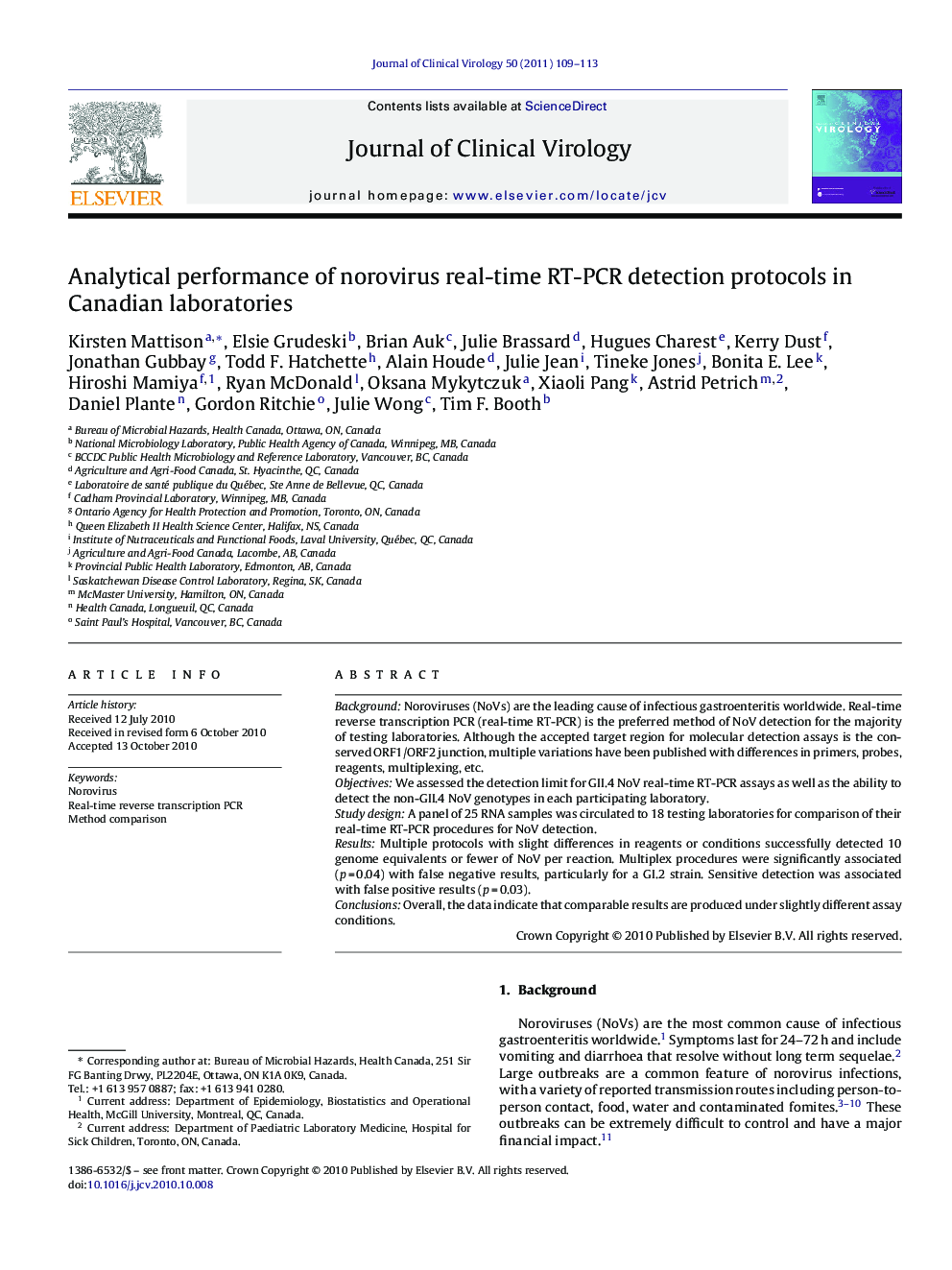| کد مقاله | کد نشریه | سال انتشار | مقاله انگلیسی | نسخه تمام متن |
|---|---|---|---|---|
| 3369255 | 1219026 | 2011 | 5 صفحه PDF | دانلود رایگان |

BackgroundNoroviruses (NoVs) are the leading cause of infectious gastroenteritis worldwide. Real-time reverse transcription PCR (real-time RT-PCR) is the preferred method of NoV detection for the majority of testing laboratories. Although the accepted target region for molecular detection assays is the conserved ORF1/ORF2 junction, multiple variations have been published with differences in primers, probes, reagents, multiplexing, etc.ObjectivesWe assessed the detection limit for GII.4 NoV real-time RT-PCR assays as well as the ability to detect the non-GII.4 NoV genotypes in each participating laboratory.Study designA panel of 25 RNA samples was circulated to 18 testing laboratories for comparison of their real-time RT-PCR procedures for NoV detection.ResultsMultiple protocols with slight differences in reagents or conditions successfully detected 10 genome equivalents or fewer of NoV per reaction. Multiplex procedures were significantly associated (p = 0.04) with false negative results, particularly for a GI.2 strain. Sensitive detection was associated with false positive results (p = 0.03).ConclusionsOverall, the data indicate that comparable results are produced under slightly different assay conditions.
Journal: Journal of Clinical Virology - Volume 50, Issue 2, February 2011, Pages 109–113